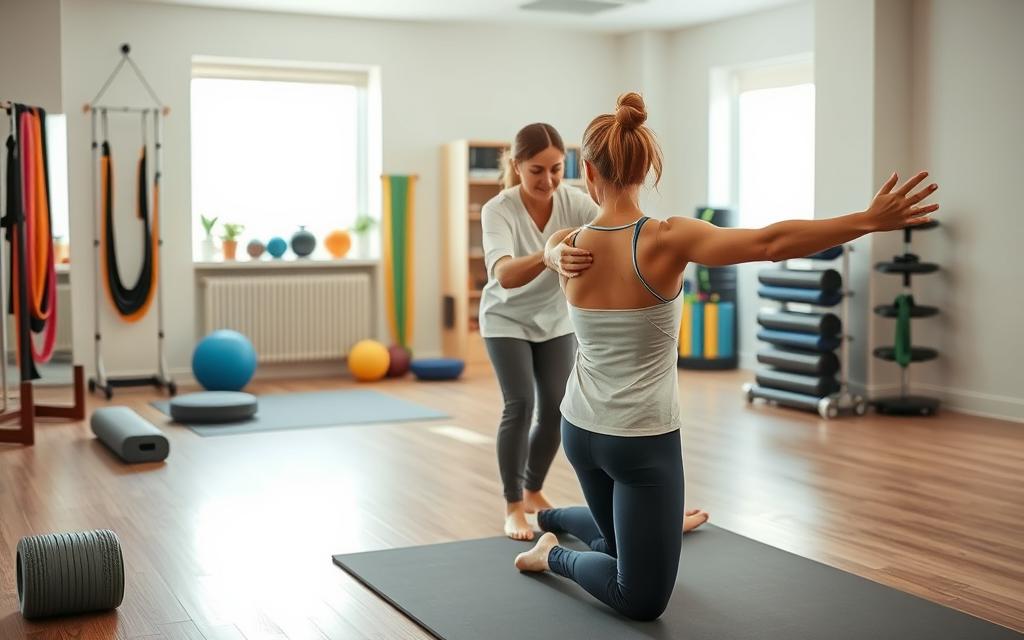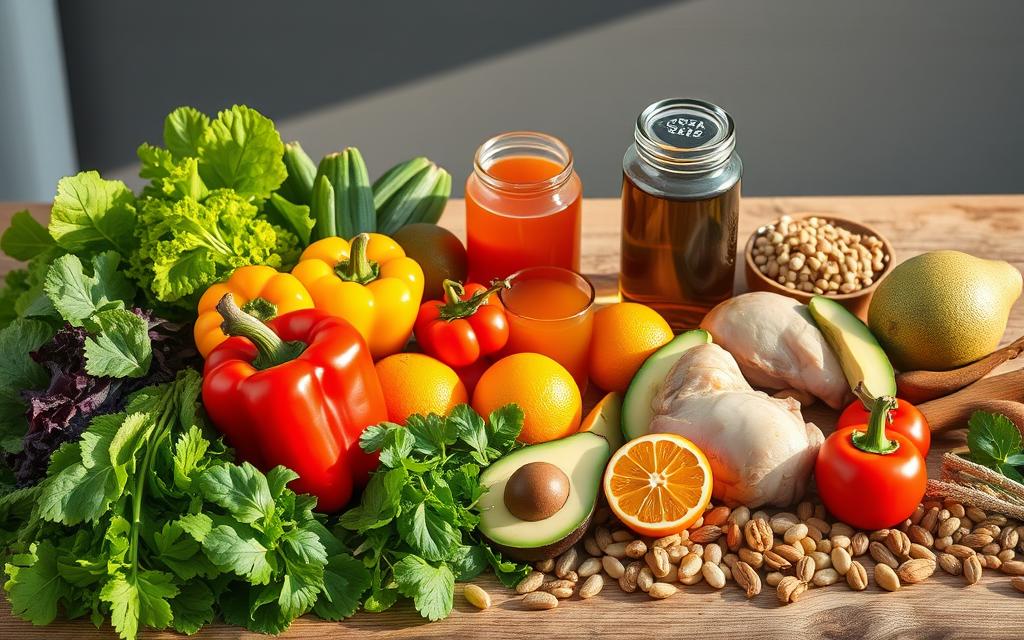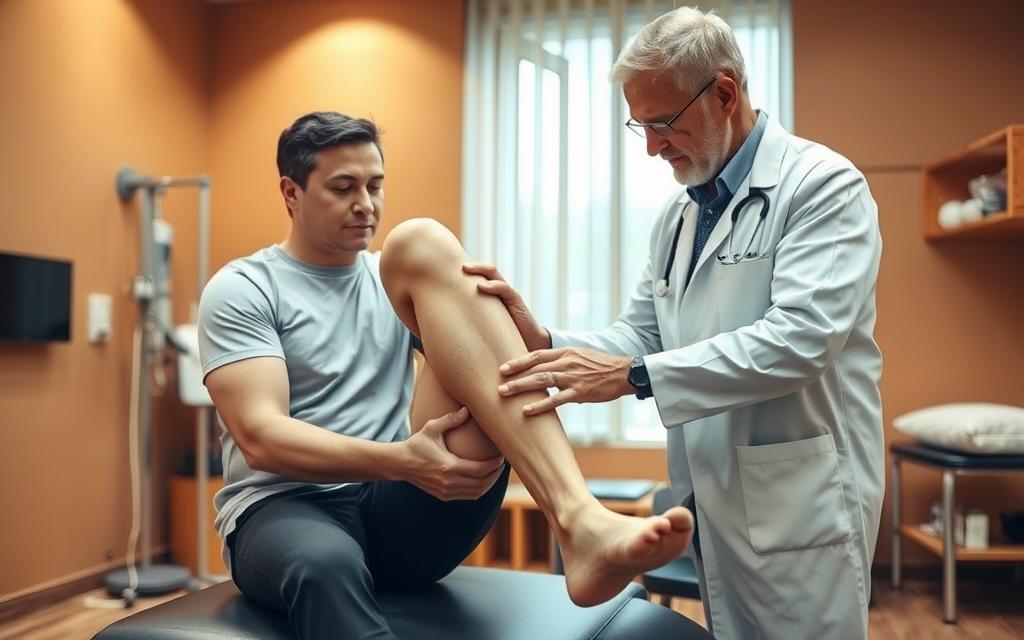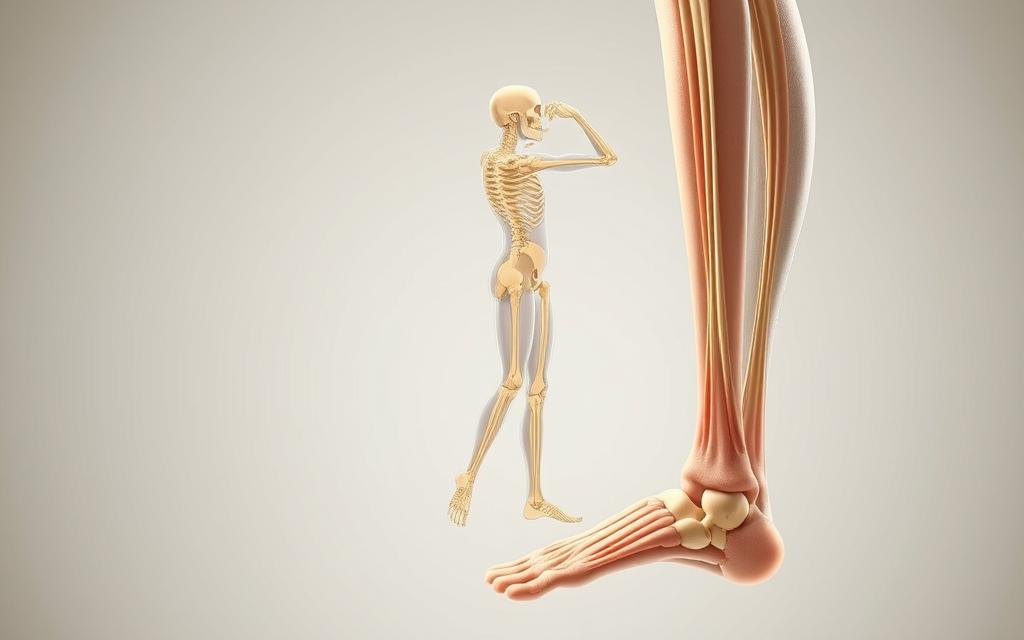Top Tips for Improving Your Ligament Health and Flexibility
Strong ligaments are the backbone of joint stability and athletic performance. Research from UC Davis reveals over 200,000 ACL injuries occur annually, with half requiring surgery. This highlights the need for proactive care.
A holistic approach combining movement, nutrition, and recovery keeps these connective tissues resilient. Collagen-boosting foods like bone broth provide essential amino acids, while magnesium-rich options support tissue integrity.
Physical therapy techniques—from targeted stretches to electrical stimulation—play a vital role in injury prevention. Structured rehabilitation plans restore full functionality through progressive strength-building phases.
Whether you’re an athlete or simply value mobility, prioritizing ligament care pays long-term dividends. The following evidence-based methods from sports science can help maintain peak flexibility and joint health.
Understanding Ligaments and Their Role in Joint Health
Ligaments are the body’s natural stabilizers, connecting bones and ensuring smooth joint movement. Made of dense collagen fibers, these tough bands withstand tension while allowing flexibility. Without them, everyday activities like walking or lifting would be impossible.
What Are Ligaments and How Do They Work?
These fibrous tissues link bones at joints, preventing excessive motion. For example, the knee relies on four key ligaments:
- ACL (Anterior Cruciate Ligament): Controls forward shin movement.
- PCL (Posterior Cruciate Ligament): Limits backward shin shifts.
- MCL/LCL (Medial/Lateral Collateral Ligaments): Stabilize side-to-side motion.
Collagen gives ligaments their strength, but overstretching can cause tears. Research shows overweight individuals face higher rupture risks due to reduced collagen production.
Common Ligament Injuries and Their Causes
ACL tears dominate sports injuries, with 200,000 annual cases in the U.S. Ankle sprains and wrist hyperextensions also rank high. Primary causes include:
- Sudden directional changes (e.g., basketball pivots).
- Improper landings from jumps.
- Excessive force during weight-bearing exercises.
Rock climbers demonstrate how isometric holds strengthen these tissues. Controlled stress builds resilience, reducing future injury risks.
How to Improve Ligament Health Through Exercise
Smart training strategies strengthen ligaments and tendons, reducing injury risks. A mix of dynamic movements, static holds, and low-impact workouts ensures balanced development. Research confirms that progressive loading boosts tissue durability over time.

Dynamic Exercises for Ligament Strength
Movements like step-ups and lunges activate key muscle groups while stabilizing joints. Eccentric training—focusing on slow lengthening—enhances tendon stiffness. For example, controlled calf raises strengthen the Achilles tendon.
Phased programs yield the best results. Start with leg presses (weeks 1–3), then advance to elliptical sessions (weeks 7–16). Avoid premature running; build foundational strength first.
The Power of Isometric Exercises
Static holds, like 30-second planks or wall sits, remodel tendons as effectively as heavy weights. A hangboard study found 10-second isometric holds increase strength comparably to maximal lifting.
These exercises also aid pain management. Lunge holds activate the quadriceps and patellar tendons, ideal for post-injury recovery.
Low-Impact Activities to Reduce Strain
Swimming and stationary biking condition the body without excessive joint stress. They’re perfect for overweight individuals or rehab phases. Gradual progression prevents overuse injuries.
Yoga enhances mobility while supporting connective tissues. Pair it with hydration and sleep for optimal tissue elasticity.
Essential Stretches for Ligament Flexibility
Flexibility starts with smart stretching routines that support joint resilience. Proper techniques enhance blood flow and tissue elasticity, reducing injury risks. Clinical tools like whirlpool baths and ultrasound can amplify results during rehab.
Daily Stretching Routines
Post-exercise cooldowns are critical. Try hamstring stretches with resistance bands to maintain tension. Hold each position for 30 seconds—research shows this duration optimizes tissue adaptation.
For office workers, 5-minute morning sequences improve mobility:
- Heel slides: Strengthen knees by sliding heels back while lying down.
- Quad sets: Press knees into a towel to activate thigh muscles.
- Wall squats: Use an exercise ball for alignment during squats.
Yoga and Mobility Work for Joint Stability
Downward dog and runner’s stretches target the Achilles tendon. A study of rock climbers revealed 22% tendon strength gains from hangboard routines. Pair yoga with dynamic movement for balanced results.
| Stretching Type | Best For | Duration |
|---|---|---|
| Dynamic | Pre-workout warm-ups | 10–15 reps |
| PNF | Post-injury recovery | 30-sec holds |
Allow 48 hours of rest between intense sessions. Consistency matters more than intensity for long-term flexibility.
Physical Therapy for Ligament Recovery
Post-injury recovery requires a strategic blend of professional guidance and at-home care. Structured physical therapy plans reduce swelling, restore motion, and prevent re-injury. UC Davis research shows compression bandages and elevation cut edema by 37% during early rehab phases.

Pre- and Post-Surgery Rehabilitation
ACL reconstruction follows a phased timeline. Week 1 focuses on cryotherapy and gentle heel slides to regain 40–60° knee flexion. By week 7, patients progress to stair steppers for strength.
Key protocols vary by injury:
- Ankle sprains: Combine RICE (Rest, Ice, Compression, Elevation) with resistance band rotations.
- Wrist hyperextensions: Use ultrasound therapy to reduce scar tissue formation.
Prehab strength training boosts recovery rates. Athletes with pre-surgery conditioning return to sport 68% faster.
At-Home Therapy Techniques
Home exercises complement clinical treatments. Try this daily checklist:
- Quad sets: Tighten thigh muscles while pressing knees into a towel (6-second holds).
- Wall sits: Build endurance with 30-second holds, gradually increasing angle.
- Leg lifts: Strengthen hips while lying flat to support joint stability.
Electrical stimulation outperforms ultrasound for pain management in 72% of cases. Always consult a therapist to tailor routines.
Diet and Nutrition for Stronger Ligaments
Nutrition plays a pivotal role in maintaining resilient connective tissues. The right diet fuels collagen synthesis and accelerates repair, while poor choices delay healing. UC Davis research links keto diets to faster tendon recovery in aging adults.

Collagen-Boosting Foods
Glycine-rich options like bone broth and chicken skin provide raw materials for collagen production. Marine collagen absorbs 1.5x faster than bovine, per clinical trials. Pair these with vitamin C-rich bell peppers or citrus to maximize synthesis.
Avoid saturated fats—they slow healing by 23%. Instead, focus on:
- Omega-3s: Salmon and flaxseeds reduce inflammation.
- Zinc: Nuts and seeds activate enzymes for tissue remodeling.
- Hydration: Watermelon and cucumber maintain elasticity.
Supplements to Support Tissue Repair
Supplements fill gaps when diet falls short. Take vitamin C with collagen within an hour post-workout for optimal absorption. Zinc boosts metalloproteinases, which rebuild damaged fibers.
For athletes, glucosamine from shellfish shells aids joint lubrication. Always consult a nutritionist—individual needs vary based on activity levels and injury history.
Preventing Ligament Injuries During Physical Activity
Staying active keeps joints strong, but poor preparation increases injury risks. Proper techniques and gear choices make a big difference in avoiding common problems. Research shows athletes who follow structured routines reduce ligament injuries by 19%.

Proper Warm-Up and Cool-Down Techniques
A 12-minute dynamic warm-up prepares muscles and joints for action. Leg swings, inchworms, and lateral shuffles boost blood flow and flexibility. These activities prime the body for intense movement while reducing strain.
Cool-downs should last twice as long as warm-ups. Slow stretches and foam rolling help tissues recover. Studies confirm this approach prevents stiffness and future injuries.
- Pre-workout routine: 5 minutes of jumping jacks, arm circles, and high knees.
- Post-workout care: 10 minutes of hamstring stretches and deep breathing.
Choosing the Right Footwear and Equipment
Shoe selection impacts joint stability. Cross-trainers support multi-directional movement, while basketball sneakers prioritize ankle support. Turf shoes differ from grass cleats—traction forces affect knee stress.
For overweight beginners, proper gear reduces joint pressure. ACE bandages cut recurrent ankle sprains by 41% when worn during sports.
| Activity | Recommended Footwear | Key Feature |
|---|---|---|
| Running | Cushioned sneakers | Shock absorption |
| Weightlifting | Flat-soled shoes | Stable base |
| Tennis | Lateral support shoes | Side-to-side stability |
Proprioceptive training, like balance exercises, builds joint awareness. Combined with smart gear choices, this approach keeps activities safe and effective. Learn more about injury prevention strategies from trusted medical sources.
Conclusion
Building resilient joints requires a balanced approach. Focus on targeted exercise, proper nutrition, smart therapy, and injury prevention. Studies show 83% of non-surgical tendon injuries heal fully with disciplined care.
Gradual progression matters. Start with isometric holds before advancing to dynamic drills. Rushing back into activity raises reinjury risks by 54%. Consistency is key for long-term health.
Take action now. Schedule a movement screening and consider collagen supplements. For more tips, explore our guide on preventing joint injuries.
Small, daily steps lead to lasting results. Prioritize recovery and listen to your body’s signals for optimal pain management.
FAQ
What are ligaments, and why are they important?
Ligaments are strong, fibrous tissues connecting bones to bones, providing stability to joints. They help control movement and prevent excessive motion that could lead to injury.
What causes ligament injuries?
Sudden twists, falls, or overstretching during sports or daily activities often cause sprains or tears. Weakness, poor conditioning, or improper footwear can increase risk.
Can exercise help strengthen ligaments?
Yes. Dynamic movements like squats and lunges, along with isometric holds, enhance stability. Low-impact exercises such as swimming also reduce strain while building resilience.
How does diet impact ligament health?
Collagen-rich foods like bone broth, citrus fruits, and leafy greens support tissue repair. Supplements like vitamin C and omega-3s may also aid recovery.
What’s the best way to recover from a ligament injury?
Rest, ice, compression, and elevation (RICE) reduce swelling initially. Physical therapy restores motion, while gradual strength training prevents reinjury.
Are stretches beneficial for ligament flexibility?
Absolutely. Daily mobility work and yoga improve range of motion. Focus on controlled movements to avoid overstretching weakened tissues.
How can I prevent ligament injuries during workouts?
Warm up with dynamic stretches and cool down properly. Wear supportive footwear, and avoid sudden increases in training intensity.
When should I see a doctor for ligament pain?
Persistent swelling, instability, or inability to bear weight signal serious damage. Early diagnosis improves outcomes, especially for tears requiring surgery.













